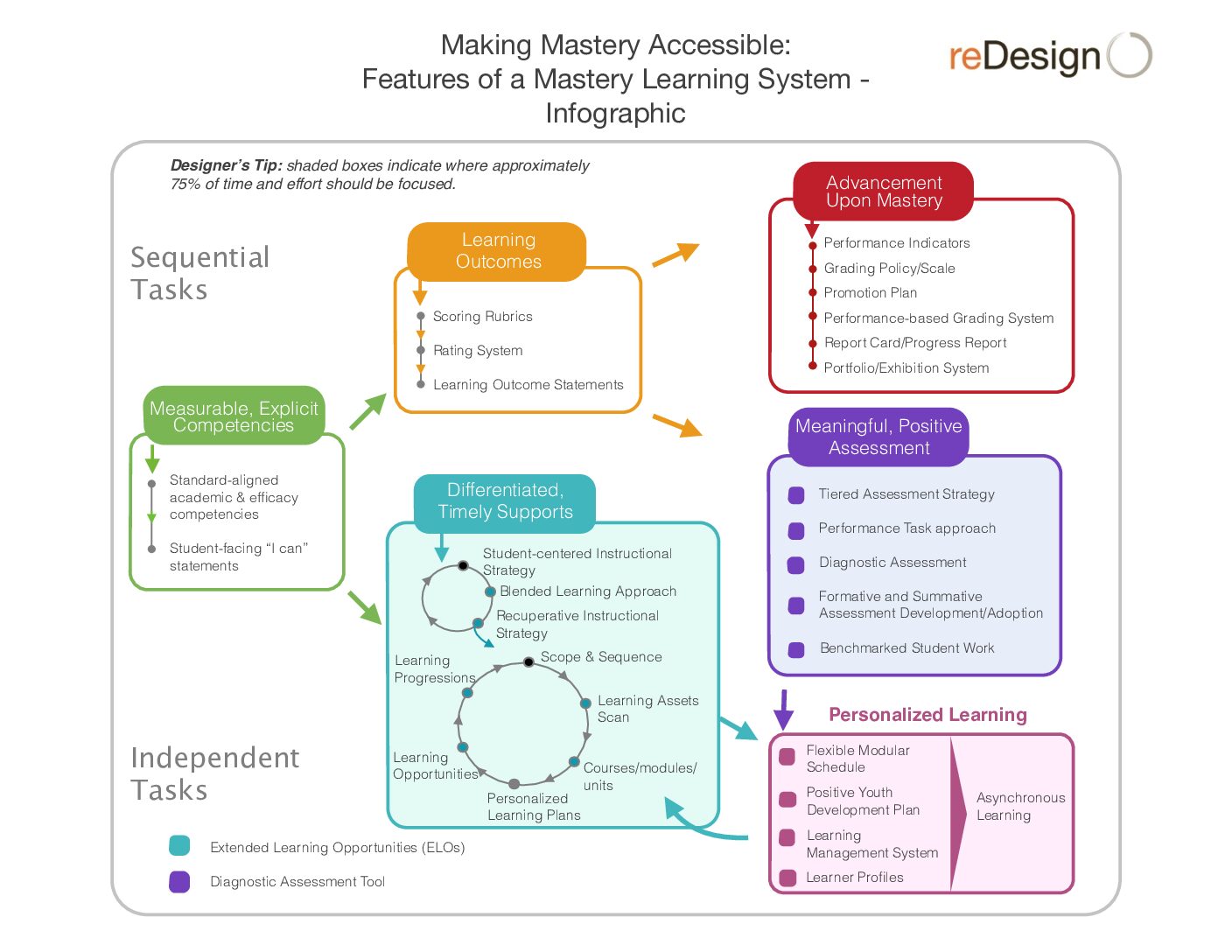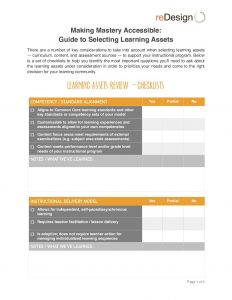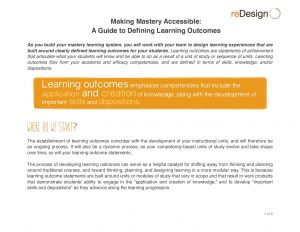Making Mastery Accessible
an open source knowledge-building project developed in 2015 in partnership with Springpoint, and supported by Carnegie Corporation of New York.
Features of a Mastery Learning System (infographic)
Designing a mastery learning system is incredibly complex work, partly because of the broad and deep expertise required and partly because of the interdependent nature of the various aspect of the system. This infographic displays the components of a mature system, while also highlighting some of the key interactions between various elements of the system. Check out reDesign’s Roadmap to Implementing a Mastery System, which organizes these features in a recommended sequence, with accompanying designer’s tips.
Roadmap for Implementing a Mastery Learning System
Where to begin and how to proceed? Those seeking to design and implement mastery learning systems are asking these questions. The Roadmap provides a bird’s eye view of our recommended design and implementation sequence for establishing a comprehensive mastery learning system.
Competency Adoption Guide
Competencies are the foundation of a mastery learning system, helping all members of a learning community understand the skills, knowledge and capacities that will lead to strong performance.This design guide describes a four-step process to support the development of sound college- and career-aligned competencies: Plan, Goal Definition, Source & Review, and Adapt & Iterate. Readers will also find profiles of the competencies developed and used by the School District of Philadelphia and its nonprofit partner B-21, and NYC’s Bronx Arena High School.
A Guide to Creating a Mastery-based Grading Policy
Developing a grading policy is a key step toward solidifying and communicating a mastery learning system to stakeholders. Our Grading Policy Design Guide details the must-haves for setting up a coherent and comprehensive system to support and track mastery learning. Because so many schools operate within states and districts that are organized around the Carnegie Unit, the guide also provides a set of recommendations and workarounds to address the particular tensions that arise from this circumstance.
Making Mastery Accessible: Self-Assessment Tool
One of the challenges of creating a mastery learning system is the range and depth of expertise that is required to create a coherent model. Knowing how or if one’s skills and capacities will transfer to this context is not always simple. Our Self-Assessment will help you identify strengths and competencies on your team, and highlight gaps where additional expertise might be solicited. In addition to sets of reflective questions on key elements of mastery learning, this Self-Assessment Tool offers team activities for exploring areas for deeper learning.
A Guide to Selecting Learning Assets
Identifying or developing high-quality learning assets to support mastery learning remains challenging, particularly at the secondary level. This design guide is organized as a set of check-lists that can be used to evaluate the quality and appropriateness of online learning assets. Using the checklists will help you reflect on issues such as the appropriateness for your students’ knowledge and skills, alignment with your school’s competencies, the existence of embedded formative and summative assessments, and the asset’s progress tracking capabilities.
A Guide to Creating Learning Outcome Statements
Learning Outcomes are an anchor to a mastery learning system’s curriculum and assessment design. Unfortunately, developing strong, competency-aligned learning outcomes is challenging, requiring deep content and skill knowledge. This guide provides support to designers undertaking this work.
Join our mailing list to find out when a hot new resource drops!







